This Is Not Your Father’s Tomahawk Cruise Missile
The new Block V can run down enemy ships and blast them with a half-ton high explosive warhead.
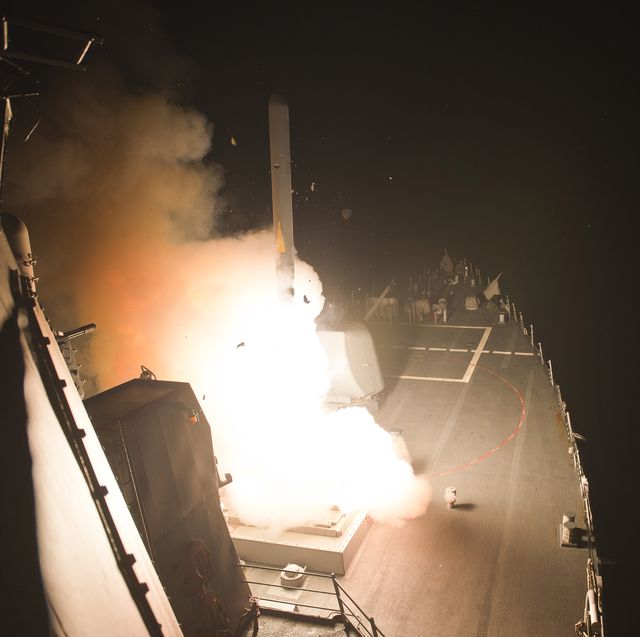
Gear-obsessed editors choose every product we review. We may earn commission if you buy from a link. Why Trust Us?
- The new missiles can attack enemy ships at sea or land targets with a new multi-effect warhead.
- The Tomahawk design is nearly half a century old but with the help of rolling upgrades has remained a viable weapon system.
The Tomahawk cruise missile, one of the oldest missiles in U.S. military service, is set to receive a new set of capabilities designed to help keep potential enemies in check.
➡ You love badass military tech. So do we. Let's nerd out over it together.
The missile’s new Block V configuration will include both new anti-shipping and land attack variants, boosting the capabilities of the U.S. Navy surface warships that carry them.
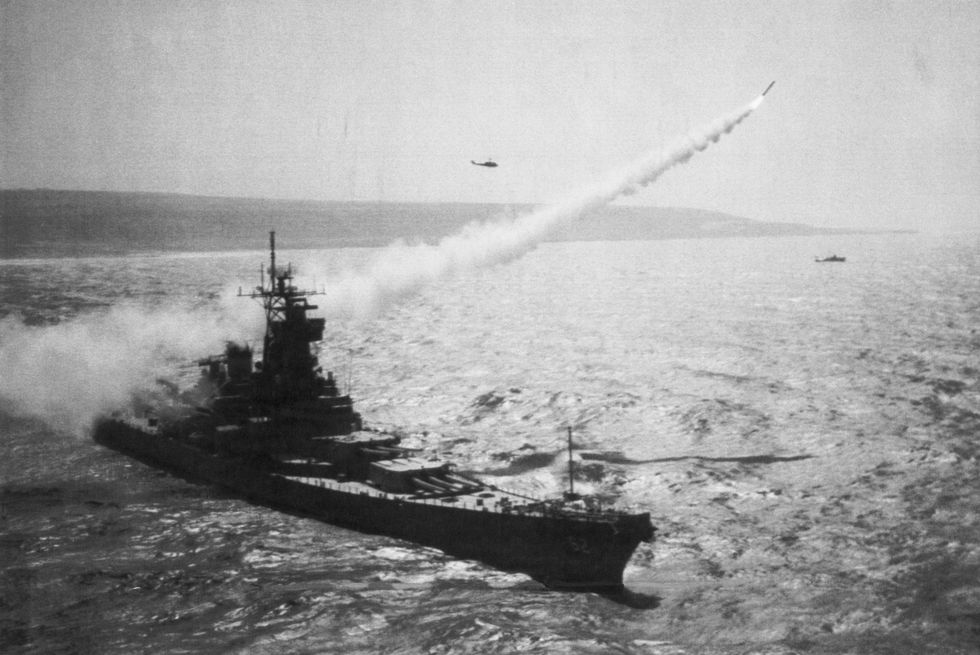
The Tomahawk is one of the most effective missiles in the Pentagon’s history. The missile, which General Dynamics first designed in the 1970s, was one of the first truly effective cruise missiles. Unlike traditional missiles that use rocket motors, fly high altitudes, and travel at Mach 2+ speeds, cruise missiles use turbojet engines, fly at low altitudes, and travel at subsonic speeds.
Most missiles are designed to sprint to their targets; Tomahawk is designed to run a marathon. Engineers chose a liquid fuel-sipping turbojet engine because it enabled greater range than a rocket engine of roughly the same size. A slower speed also makes low altitude flight more viable, which in turn makes the missile much more difficult to detect by radar. Today, most advanced countries operate similar low-flying subsonic missiles, including Russia, China, France, and South Korea.

Despite its age, the Tomahawk has stayed in the game through a series of progressive upgrades. The original Block I version included both nuclear-tipped and anti-ship versions of the missile. Block II introduced land attack capabilities, like those demonstrated during the 1991 Gulf War, with missiles striking Iraqi Air Force airfields and daytime targets across the Iraqi capital of Baghdad. Block III added GPS, eliminating a time-consuming programming system that required 80 hours to plot a missile’s course as well as a loitering capability.
Block IV Tomahawks added more features, including the ability to be re-routed to new targets in mid-flight. Block IV missiles also feature a camera and datalink, allowing a missile to send imagery back to friendly forces. If a Tomahawk discovers its target already struck or civilians are crowding the target area, the missile can be re-routed to destroy something else.
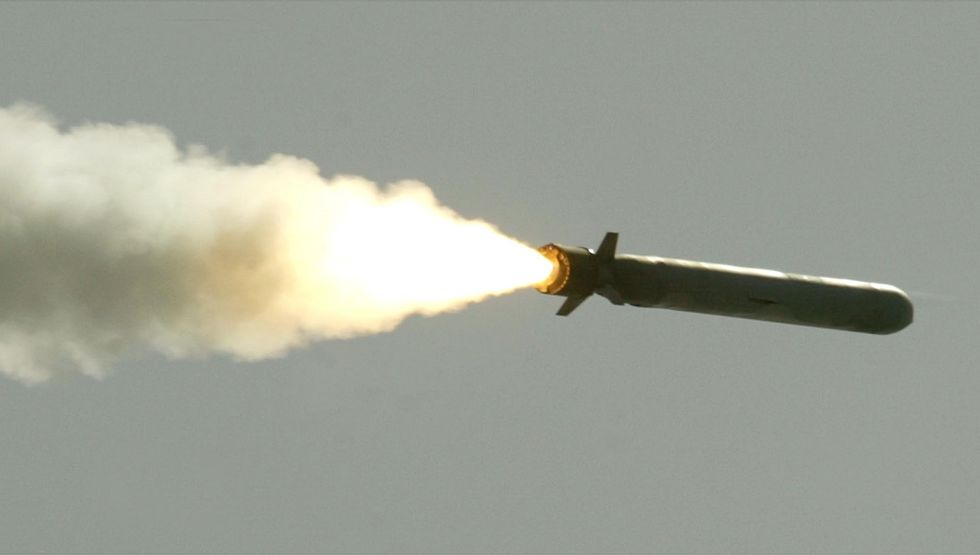
Now, Block V is where it gets really interesting.
The newest variant adds upgraded navigation and communications gear to older Tomahawks, electronics that, according to Defense News , make it easier to work through electronic warfare jamming and more difficult for enemy radars to detect. That’s important, because once detected, subsonic cruise missiles are relatively easy to shoot down. Block V then forks into two missiles, Block Va and Block Vb.

The Coolest Military Toys

GRTVF 1:18 Scale RC Tank German Tiger Panzer

Tletiy Soviet T34 Mini RC Tank

PeleusTech 3,846-Piece Model WWII German Dora Cannon

Big Bang 9-Inch 6F Light Field Vintage Cannon
Block Va essentially turns the cruise missile into an anti-ship missile. Also known as Maritime Strike Tomahawk, Block Va adds a seeker kit, including sensor, giving it the ability to strike moving targets at sea at ranges in excess of 1,000 miles. It’s not clear if Block Va can still strike land targets.
Block Vb is more oriented toward striking land targets with the new Joint Multiple Effects Warhead (MEWS). The weapon is a bit mysterious, but it seems to be a 1,000-pound warhead capable of striking both surface and underground hardened targets, including “integrated air defense systems and weapons of mass destruction” .
The great thing about Block V is that, unlike the Navy’s current anti-ship missile, it doesn’t need separate launchers. Block Vs will fit in any Mk. 41 vertical launch system silo—the same silo that currently carries Standard anti-air missiles, the SM-3 missile interceptor, Evolved Sea Sparrow interceptor missiles, and vertical launch anti-submarine rockets.
Today’s guided missile cruisers carry 122 silos, while destroyers carry between 90 and 96 silos. Theoretically, a cruiser could carry up to 122 Block Va missiles, though a more rounded mix of all of the above is preferred. Block V will also arm U.S. Navy submarines.
Like a lot of weapons in America’s arsenal, the Tomahawk missile is old—at least in concept. What started out as a nuclear-capable missile can now hunt down warships at 1,000 miles and attack hardened underground targets. The missile’s ability to adapt with the times, take on new roles, and reinvent itself means it will be a potent weapon system for easily another decade to come.
Now Watch This:
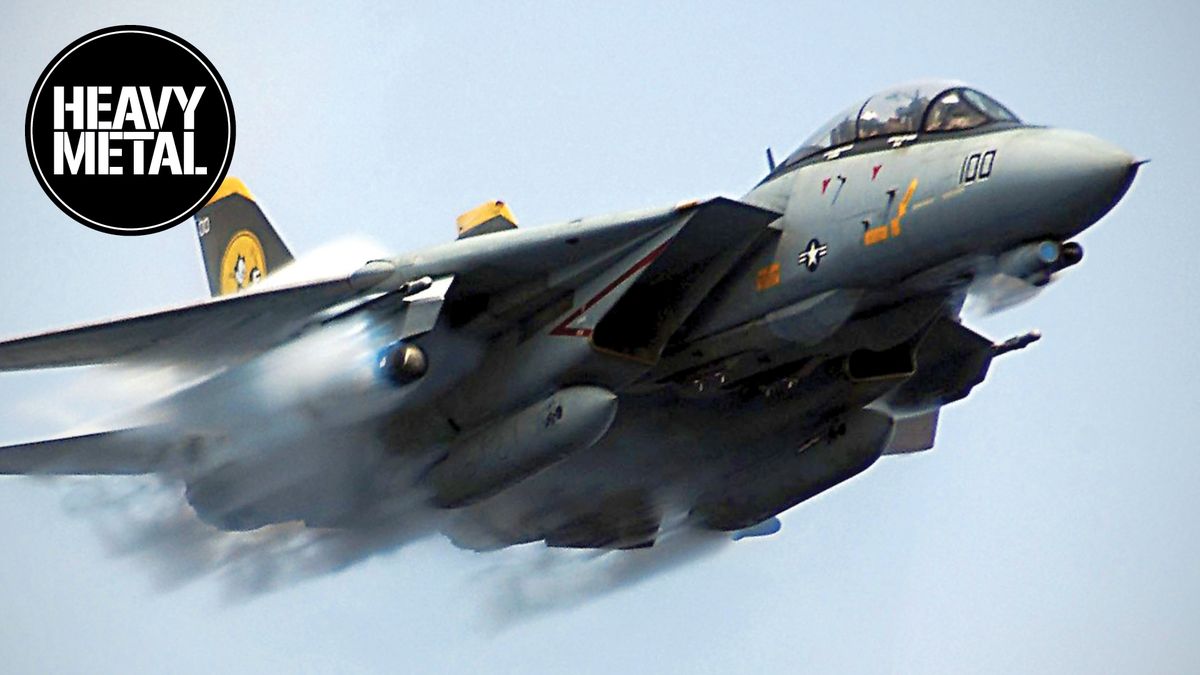
Kyle Mizokami is a writer on defense and security issues and has been at Popular Mechanics since 2015. If it involves explosions or projectiles, he's generally in favor of it. Kyle’s articles have appeared at The Daily Beast, U.S. Naval Institute News, The Diplomat, Foreign Policy, Combat Aircraft Monthly, VICE News , and others. He lives in San Francisco.
.css-cuqpxl:before{padding-right:0.3125rem;content:'//';display:inline;} Weapons .css-xtujxj:before{padding-left:0.3125rem;content:'//';display:inline;}

The Army Has a Plan to Kill Drones

Army: The Days of Towed Artillery Are Over

The US Army Has Deployed Lasers to a Combat Zone

The Manhattan Project's Deadly Legacy in St. Louis
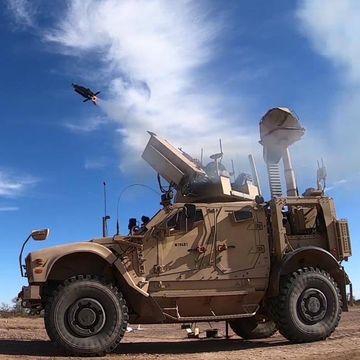
The Army Is Clearing Out for Coyote Drone Hunters
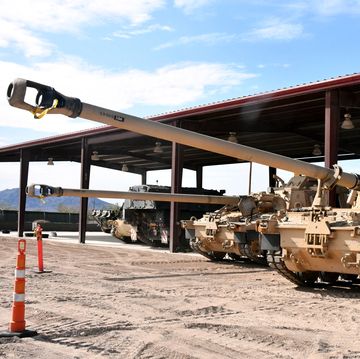
This Long-Range Howitzer Has Met Its Achilles Heel

Inside the Development of America's New Nuke
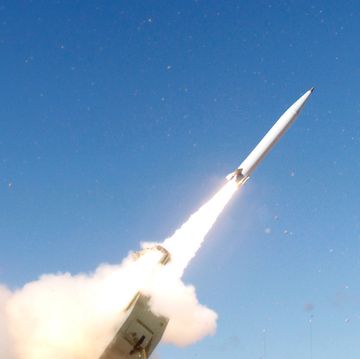
What’s in the Pentagon’s 2025 Defense Budget
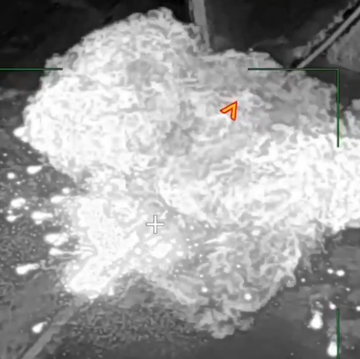
A Ballistic Missile’s Wrath Wreaks Havoc
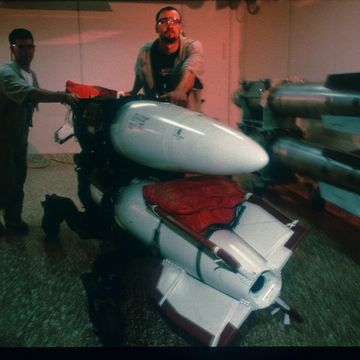
America’s Nuke Factory is Threatened by Wildfires

The Army and Marines Are Fielding Robotic Mules
- Air Transport
- Defense and Space
- Business Aviation
- Aircraft & Propulsion
- Connected Aerospace
- Emerging Technologies
- Manufacturing & Supply Chain
- Advanced Air Mobility
- Commercial Space
- Sustainability
- Interiors & Connectivity
- Airports & Networks
- Airlines & Lessors
- Safety, Ops & Regulation
- Maintenance & Training
- Supply Chain
- Workforce & Training
- Sensors & Electronic Warfare
- Missile Defense & Weapons
- Budget, Policy & Operations
- Airports, FBOs & Suppliers
- Flight Deck
- Marketplace
- Advertising
- Marketing Services
- Fleet, Data & APIs
- Research & Consulting
- Network and Route Planning
Market Sector
- AWIN - Premium
- AWIN - Aerospace and Defense
- AWIN - Business Aviation
- AWIN - Commercial Aviation
- Advanced Air Mobility Report - NEW!
- Aerospace Daily & Defense Report
- Aviation Daily
- The Weekly of Business Aviation
- Air Charter Guide
- Aviation Week Marketplace
- Route Exchange
- The Engine Yearbook
- Aircraft Bluebook
- Airportdata.com
- Airport Strategy and Marketing (ASM)
- CAPA – Centre for Aviation
- Fleet Discovery Civil
- Fleet Discovery Military
- Fleet & MRO Forecast
- MRO Prospector
- Air Transport World
- Aviation Week & Space Technology
- Aviation Week & Space Technology - Inside MRO
- Business & Commercial Aviation
- CAPA - Airline Leader
- Routes magazine
- Downloadable Reports
- Recent webinars
- MRO Americas
- MRO Australasia
- MRO Baltics & Eastern Europe Region
- MRO Latin America
- MRO Middle East
- Military Aviation Logistics and Maintenance Symposium (MALMS)
- Asia Aerospace Leadership Forum & MRO Asia-Pacific Awards
- A&D Mergers and Acquisitions
- A&D Programs
- A&D Manufacturing
- A&D Raw Materials
- A&D SupplyChain
- A&D SupplyChain Europe
- Aero-Engines Americas
- Aero-Engines Europe
- Aero-Engines Asia-Pacific
- Digital Transformation Summit
- Engine Leasing Trading & Finance Europe
- Engine Leasing, Trading & Finance Americas
- Routes Americas
- Routes Europe
- Routes World
- CAPA Airline Leader Summit - Airlines in Transition
- CAPA Airline Leader Summit - Americas
- CAPA Airline Leader Summit - Latin America & Caribbean
- CAPA Airline Leader Summit - Australia Pacific
- CAPA Airline Leader Summit - Asia & Sustainability Awards
- CAPA Airline Leader Summit - World & Awards for Excellence
- GAD Americas
- A&D Mergers and Acquisitions Conference (ADMA)
- A&D Manufacturing Conference
- Aerospace Raw Materials & Manufacturers Supply Chain Conference (RMC)
- Aviation Week 20 Twenties
- Aviation Week Laureate Awards
- ATW Airline Awards
- Program Excellence Awards and Banquet
- CAPA Asia Aviation Summit & Awards for Excellence
- Content and Data Team
- Aviation Week & Space Technology 100-Year
- Subscriber Services
- Advertising, Marketing Services & List Rentals
- Content Sales
- PR & Communications
- Content Licensing and Reprints
- AWIN Access
Scramjet-Powered Cruise Missile Emerges As New U.S. Priority
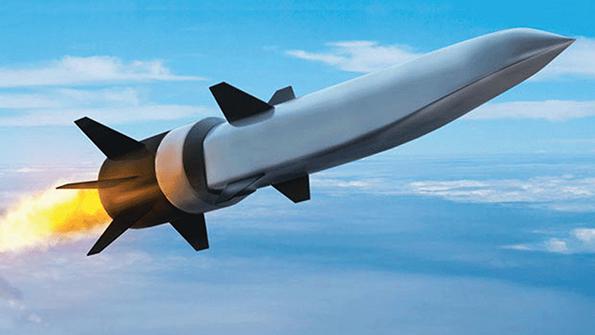
Fielding an operational scramjet-powered cruise missile has emerged as a new priority for the U.S. Defense Department’s proliferating portfolio of maneuvering hypersonic weapons.
Senior defense officials are putting together a program to develop an operational follow-on to DARPA’s Hypersonic Air-breathing Weapon Concept (HAWC), which currently supports competing scramjet-powered missile demonstrators designed by Lockheed Martin/Aerojet Rocketdyne and Raytheon/Northrop Grumman Innovation Systems teams.
- Pentagon officials seek hypersonic air-breathing weapon follow-on
- Awareness of boost-glide challenges sinks in
“We are in the process of trying to figure out what [an operational program] would look like,” says Mike White, assistant director for hypersonics in the office of the under secretary of defense for research and engineering.
As the U.S. military rushed after 2017 to respond to Russian and Chinese hypersonic advances, air-breathing hypersonic cruise missiles fell to the bottom of the priority list. Funding for operational programs favored boost-glide technology over the seemingly less mature field of weapons powered by scramjets (supersonic combustion ramjets).
But that assumption is being challenged. Along with the flight-test experience accumulated a decade ago by the Air Force Research Laboratory’s (AFRL) X-51 scramjet vehicle, recent ground tests and simulations indicate scramjet technology is more advanced than previously understood. In September, the AFRL announced it had achieved thrust levels over 13,000 lb. with a Northrop-designed engine at speeds “above Mach 4” in a hypersonic wind tunnel. In June, Raytheon reported the maturity of its scramjet-powered HAWC demonstrator had exceeded that of its boost-glide design.
In December 2018, Michael Griffin, under secretary of defense for research and engineering, described hypersonic cruise missiles as “further out” than boost-glide weapons. But the technology advanced so quickly that another official, Air Force acquisition chief Will Roper, concluded seven months later the HAWC program would be “a nearer-term not a far-term capability.”
“We’d like to see HAWC transition to a fully operational system,” says Mark Lewis, the Defense Department’s director of research and engineering for modernization. “It’s probably the issue that our hypersonic team is spending most time on right now.”
Awareness is also growing for the technical challenges still facing medium-range boost-glide missiles in the class of DARPA’s Tactical Boost Glide (TBG) missile demonstrators. The Air Force’s 2017 decision to launch the AGM-183A Air-launched Rapid Response Weapon (ARRW), an operational follow-on to the TBG, helped legitimize the Defense Department’s revived interest in hypersonic weapons, White says.
“I think people underestimate the importance of this decision of the Air Force [to launch ARRW] in the hypersonic community,” he says. “We’ve always been kind of stuck in the [research and development] realm. The Air Force in 2017, they were the first service that said: ‘Hey, we want hypersonic weapons.’”
But the TBG-derived ARRW represents a particularly difficult technical challenge. The design uses a higher lift-over-drag ratio wing shape, which has never been successfully tested by the U.S. government. By contrast, the axisymmetric shape of the lower lift-over-drag glider developed for the Common Hypersonic Glide Body (C-HGB)—the front-end designed for the Air Force Hypersonic Conventional Strike Weapon, the Army’s Long-Range Hypersonic Weapon (LRHW) and the Navy’s Intermediate-Range Conventional Prompt Strike (IRCPS)—has logged several successful flight tests since the late 1970s. The winged TBG’s greater maneuverability, albeit with shorter range, makes it far more challenging to design.
“It’s DARPA-hard, and TBG is hard,” Lewis says.
Ongoing studies by the Air Force’s Warfighting Integration Capability are also starting to highlight the operational benefits of cruise missiles compared to medium-range boost-glide systems. A cruise missile still requires a booster rocket to accelerate to hypersonic speed, but it does not need to carry as much oxidizer and fuel as a boost-glide rocket because it remains within the atmosphere. Air-breathing cruise missiles’ smaller size means a single aircraft, such as a Boeing B-52, can carry them in much greater numbers.
“For a hypersonic boost-glide vehicle you can get two, maybe four, on a B-52,” White says. “But you can get 15 or maybe 20 hypersonic cruise missiles [on a B-52] because the size is much smaller.So you can carry them internally in the rotary rack. There are significant advantages for the air breathers, but they offer different technical challenges.”
The smaller size and increased packaging advantages of air breathers would give the Air Force significant tactical advantage, Lewis adds. “The No. 1 question we should be asking is: ‘How do we deliver lots of these things?’ In my mind, one way to do that is to fit a lot of them in a weapons bay. Getting 15-20 per bomb bay is a lot, but if I’m [launching them from] a single mobile launcher, I’m not sure I can deliver the numbers I need. We are not interested in capability when we build two and declare it a success—that doesn’t do anything.”
The Pentagon’s hypersonic weapons portfolio emerged in a blur of bureaucratic activity between 2017 and 2018. The first step was the Air Force’s decision to launch the medium-range ARRW program in 2017 as the follow-on to TBG. Shortly afterward, the Air Force also decided to launch the longer-range HCSW. In November 2017, the Navy conducted a successful test of the proposed C-HGB, which prompted the Navy and the Army to support funding toward the operational prototypes of the IRCPS and LRHW—for submarine and ground launch, respectively.
As it stands now, the portfolio includes air-launched medium-range and long-range boost-glide systems, an intermediate-range submarine-launched missile and a long-range weapon launched from a tractor trailer. If an operational follow-on of the HAWC is approved, with Air Force and Navy concepts under consideration, new air- and surface-launched options for medium-range targets could become available.
In addition to the offensive programs, the Defense Department’s road map also includes development of a counter-hypersonic system—starting with the Missile Defense Agency’s Regional Glide-Phase Weapon System as well as multiple programs for booster development and continued funding of basic science and technology. Additional DARPA programs include the ground-launched Operational Fires, which seeks to integrate a TBG front-end on a two-stage booster stack that includes a throttled upper stage, and the Advanced Full-Range Engine, a dual-mode ramjet that could power a future hypersonic aircraft.
Such a diverse yet overlapping road map has prompted criticism. In July, the chairman of the House appropriations subcommittee on defense, Rep. Peter Visclosky (D-Ind.), warned defense officials that they “need to better define the strategy for the investment in these systems.” Visclosky’s committee proposed cutting some funding for the Army’s hypersonic program, but a joint conference committee of Congressional appropriators ultimately restored the funding and added more for other hypersonic programs.
Lewis believes the development of a multitude of hypersonic missile programs is justified.
“Too many people think hypersonics is just one thing,” Lewis says. “They think, for example, [it’s just for the long-range, conventional prompt strike mission]. But no, it’s a range of capabilities.
“Even at the tactical level it’s, for lack of a better phrase, a high-low mix,” Lewis adds. “We should probably have a mix of air breathers and boost-glide systems. They probably have different capabilities, different ranges and so on. We have F-16s and F-15s, and they have different roles, and that should be the same with tactical hypersonic systems as well.”

Steve covers military aviation, missiles and space for the Aviation Week Network, based in Washington DC.

Guy is a Senior Editor for Aviation Week, covering technology and propulsion. He is based in Colorado Springs.
Related Content

Stay Connected. Stay Informed Grow Your Business.
US to sell to Ukraine $138 million in HAWK air defense upgrades
- Medium Text
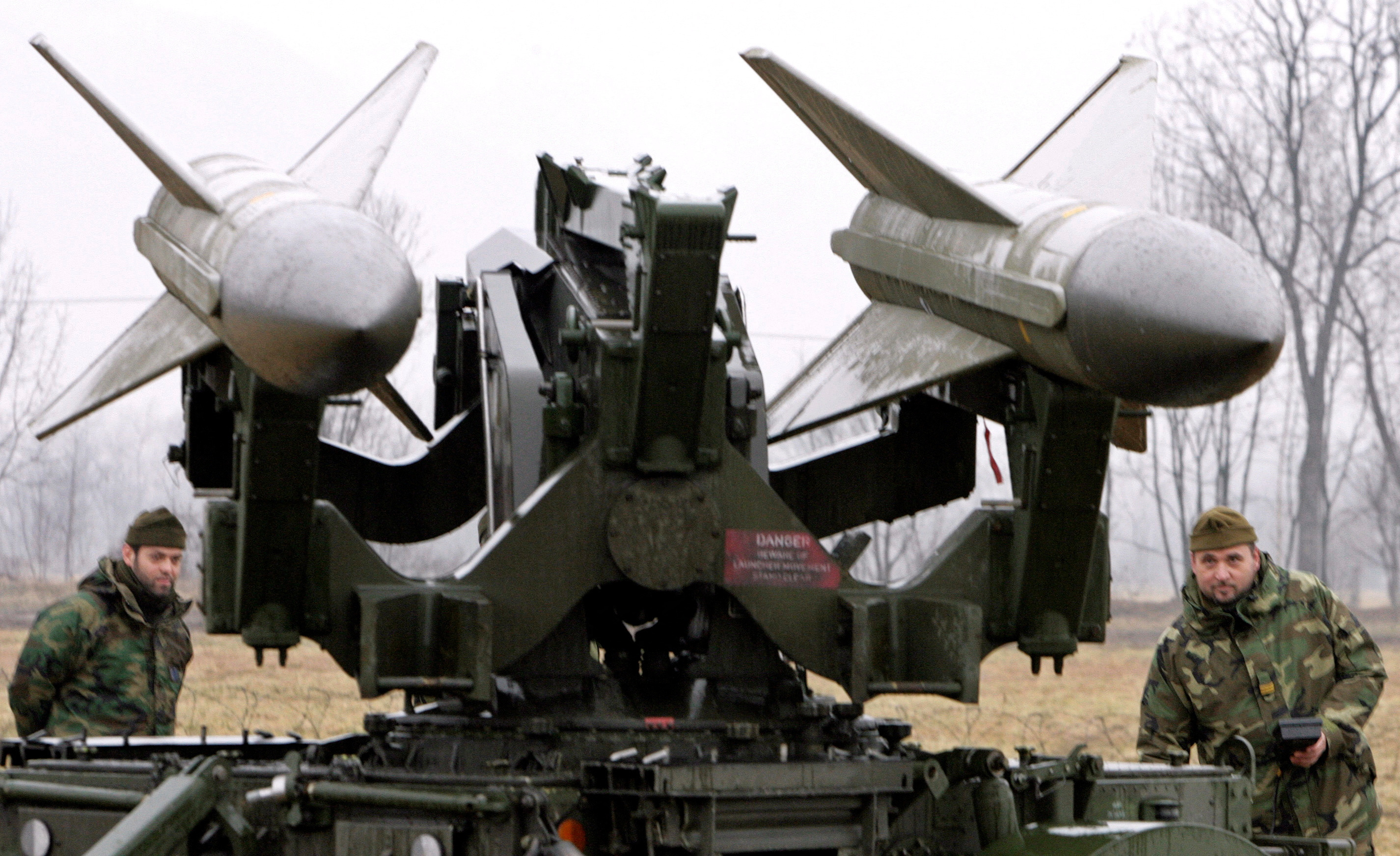
The Reuters Daily Briefing newsletter provides all the news you need to start your day. Sign up here.
Reporting by Mike Stone in Washington; Editing by Leslie Adler and Jonathan Oatis
Our Standards: The Thomson Reuters Trust Principles. New Tab , opens new tab
Italy is to admit 300 migrant workers from Lebanon, Ivory Coast and Ethiopia who will not have refugee status under a pilot project spearheaded by the Community of Sant'Egidio, a Catholic charity and advocacy group.

World Chevron

Poland's foreign ministry advises against travel to Israel, Palestine and Lebanon, it said in updated travel guidance published on Friday.
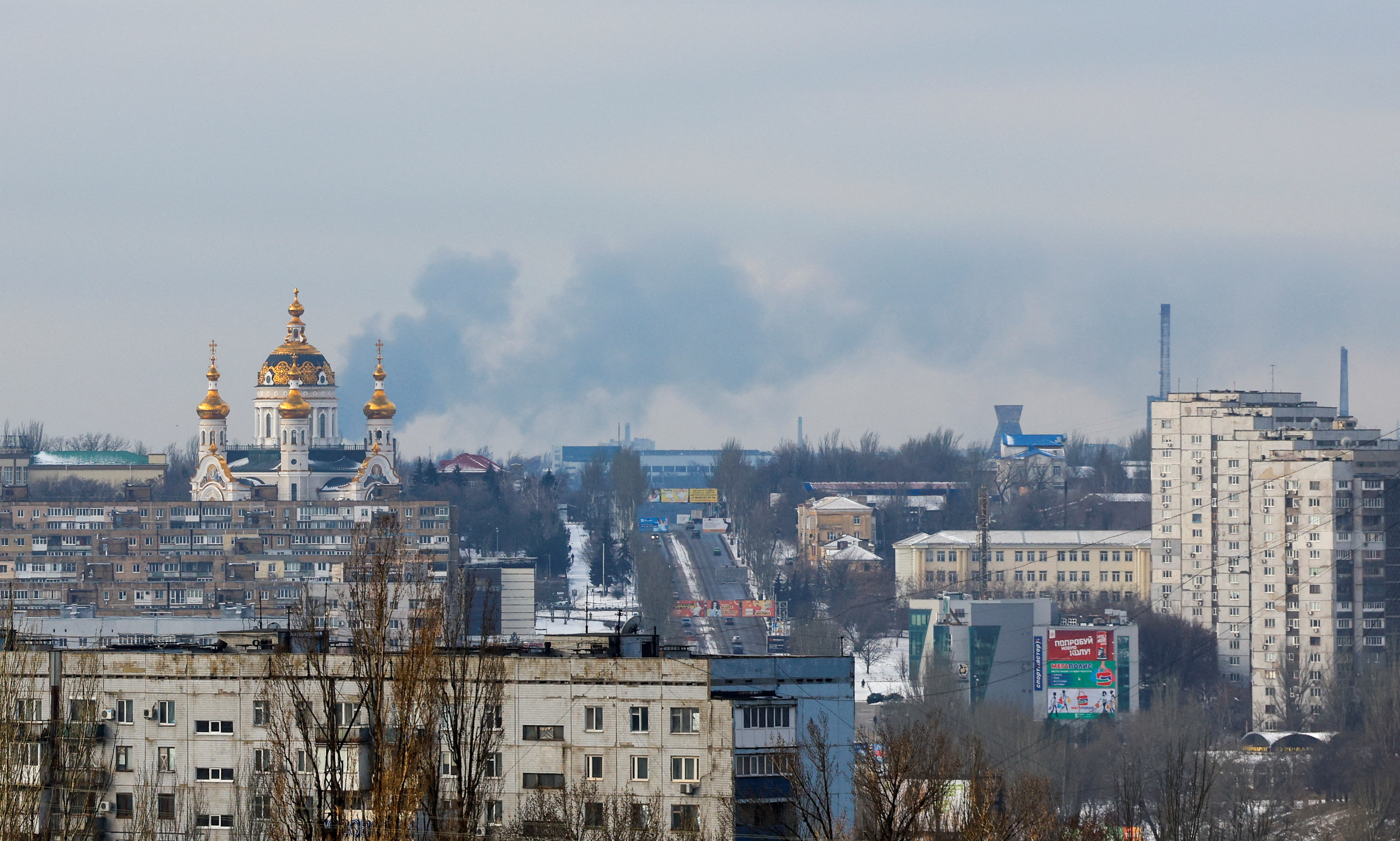
- Air Warfare
- Cyber (Opens in new window)
- C4ISR (Opens in new window)
- Training & Sim
- Asia Pacific
- Mideast Africa
- The Americas
- Top 100 Companies
- Defense News Weekly
- Money Minute
- Whitepapers & eBooks (Opens in new window)
- DSDs & SMRs (Opens in new window)
- Webcasts (Opens in new window)
- Events (Opens in new window)
- Newsletters (Opens in new window)
- Events Calendar
- Early Bird Brief
- Digital Edition (Opens in new window)
Pentagon plan for homeland cruise missile defense taking shape
WASHINGTON — The Pentagon’s plan to defend the U.S. homeland from cruise missiles is starting to take shape after a prolonged period of development because until recently , the threat was perceived as a more distant regional one, a senior Air Force official said.
North American Aerospace Defense Command and U.S. Northern Command have been working for several years and across two presidential administrations to come up with a design that can effectively defend the continental U.S. from cruise missiles, according to Brig. Gen. Paul Murray, NORAD deputy director of operations.
NORAD and NORTHCOM, in consultation with the Missile Defense Agency and the Joint Integrated Air and Missile Defense Organization are closing in on a design framework for the mission, Murray said, just as the Pentagon enters a critical decision-making period as it formulates the fiscal 2024 budget request.
Once the design is created, “it’s time to go out and defend the design,” Murray said at a Center for Strategic and International Studies conference July 14. This translates to conducting modeling and simulation to prove out, in part, that the architecture will work.
It’s also not to say “my computer’s crunching numbers, buy me these capabilities,” he said, adding capabilities need to be demonstrated which includes partnering with the MDA and others to experiment.
Budgets for cruise missile defense of the homeland in fiscal 2022 and 2023 were modest, with combatant commands including NORTHCOM placing additional funding for development in so-called wish lists rather than in base budget requests and hoping that Congress ultimately supplies the dollars.
The cruise missile challenge
Land-attack cruise missiles can be launched from the air, ground or sea and because they fly at low altitudes under powered flight, it is difficult for radars to detect them.
Ballistic missiles can be detected much earlier, which allows more time to detect, track, decide and act. For cruise missiles, decision makers may have only a couple of minutes and salvos of cruise missiles can attack from different directions, complicating the approach to defeating the threat.
While the U.S. has been focused on ballistic missile defense of the homeland from adversaries including North Korea, Russia and China have made investments over several decades to develop cruise missiles capable of carrying out a non-nuclear attack.
The 2019 Missile Defense Review highlighted the need to focus on near-peer cruise missiles and directed the Pentagon to recommend an organization to have acquisition authority of cruise missile defense for the homeland. The designation requirement also appeared in the 2017 National Defense Authorization Act, but the Pentagon has yet to choose what organization will be in charge of the effort.
The lack of an acquisition authority can hamper the budget process. And budget requests during the Trump administration contained little to get moving on cruise missile defense. In President Joe Biden’s first two budgets, the mission also received very little funding save to conduct a cruise missile defense kill chain demonstration.
Previous attempts to figure out how to defend against cruise missiles hit roadblocks.
In 2015, for example, a large aerostat being evaluated for cruise missile defense at Aberdeen Proving Ground in Maryland broke free from its mooring and drifted across Pennsylvania. It’s long tether knocked out power lines and, once it landed in a grove of trees in Amish countryside, had to be shot at by State Troopers to get it to deflate.
The JLENS program was promptly canceled .
The debate over what part of the U.S. is most important to protect from cruise missiles also hindered progress because it was difficult to land on policy to help determine site locations, Peppi DeBiaso, a non-resident senior associate at CSIS, said during a panel discussion at the conference.
Impossible to protect everything
CSIS, in a report it debuted at the conference , said it will be impossible to protect everything. Lt. Gen. A.C. Roper, U.S. NORTHCOM deputy commander, said in a recording played at the event, that “placing a Patriot or a [Terminal High Altitude Area Defense] battery on every street corner is both infeasible and unaffordable.”
Missile Defense Agency fires Patriot missile from THAAD system
Mda has hit a milestone for integrating the terminal high altitude area defense system with the patriot air and missile defense system, firing an advanced patriot missile from thaad..
The CSIS report lays out a suggested architecture, implementation plan and cost estimate for a cruise missile defense capability to protect the homeland that uses systems already fielded today and leverages sensors and radars already working other jobs to provide early warning and information to aid detection and then decision making in the event of a cruise missile attack.
The design in the CSIS report consists of five layers implemented over three phases. The elements include over-the-horizon radars, towered sensors, an aerostat, three types of interceptors, command-and-control operations centers and a mobile airborne asset, all with a projected acquisition cost of $14.9 billion. Phased operations and sustainment costs are estimated to be $17.8 billion – or $32.7 billion over 20 years.
A study from the Congressional Budget Office in 2021 developed four architectures with 20-year acquisition and sustainment costs estimated between $77 billion and $466 billion. CSIS said the architecture designs from CBO were “hampered by methodological constraints and by element selection, resulting in brittle and expensive solutions.”
The authors of the report acknowledged that “no weapon system is perfect, and perfection is the enemy of the good,” but added, “even if limited and imperfect, a sufficient and affordable defense can complicate adversary planning and strengthen deterrence.”
Vista Rampart and beyond
NORAD and NORTHCOM held a wargame called Vista Rampart in March and April to further refine cruise missile defense concepts. Then NORAD took the design outside of the headquarters to the Globally Integrated War Game, which addressed the capabilities at a broader level with the services and combatant commands.
Other considerations will need to be made, Murray added, to include how to organize, train and equip the defensive systems.
How the architecture would tie into a broader defensive framework with allies and partners such as Canada will require further coordination and analysis. The U.S. and Canada are extensively partnered through a binational command, with capabilities including the North Warning System at the edge of the Arctic designed to detect airborne threats coming from the polar region.
The Pentagon is also keeping a close eye on how the establishment of a missile defense capability on Guam will inform a homeland cruise missile defense capability. The Missile Defense Agency revealed a relatively detailed plan for defending the island against ballistic, hypersonic and cruise missile attacks as well as other airborne threats and funded the initial development and fielding in the coming years to build it.
“I think as we develop a Guam architecture, working with the Army, working with the Navy, working with the joint staff and the services, I think we will learn a lot from that, how we want to operate that integrated kind of defense” Stan Stafira, Missile Defense Agency chief architect, said at the conference. “And then that area is kind of the size of what you’re looking at trying to defend, say, a limited area in CONUS,” he said.
Last fall the Joint Requirements Oversight Council approved an Integrated Air and Missile Defense priority requirements document through a portfolio management review process, Col. Tony Behrens, JIAMDO deputy director, said on the same panel.
“This process will enable a flexible and holistic approach to determining and prioritizing IAMD requirements. It established a priority framework that the combatant commands and Joint Force will help us review annually in developing what we’re calling the Integrated Air Missile Defense portfolio priority list, a holistic approach to the entire IAMD enterprise,” Behrens said.
The list is intended to aid senior decision makers balance budgetary needs and synchronize support across the services and DOD in support of missions like air and cruise missile defense of the homeland, he said.
As the Pentagon looks at cruise missile defense capability “there is a lot of capability out there,” Stafira said, “and all of the services have developed capabilities to defend against cruise missiles.”
Yet as the Defense Department looks at all of these capabilities it is going to need help from industry to answer, “how do you integrate different industry partners’ assets together to do that?”
Jen Judson is an award-winning journalist covering land warfare for Defense News. She has also worked for Politico and Inside Defense. She holds a Master of Science degree in journalism from Boston University and a Bachelor of Arts degree from Kenyon College.
More In Pentagon
Sea-Air-Space 2024: All the cutting-edge tech at Navy’s largest show
From an eclipse that yanked attendees to the waterfront to a surprise appearance by lance cpl. chesty xvi, here’s what you may have missed..
Space Force launches weather satellite to replace 1960s-era spacecraft
The launch is a first step toward modernizing the space force’s more than 60-year-old weather constellation, the defense meteorological satellite program..
Project Overmatch’s Small says EW is ‘killer app’ for unmanned tech
The navy is investing in unmanned systems — on the water, as well as above and below it — to augment existing and near-future firepower..
Space Force picks satellite providers for rapid delivery mission
The victus haze responsive space mission is slated to launch in 2025 with a focus on real-time threat response..

Secretive US cyber force deployed 22 times to aid foreign governments
“enhancing the security of government, private sector and critical infrastructure systems grows ever more imperative,” said air force gen. timothy haugh., featured video, despite being gravely wounded, this ranger refused to leave his men in the vietnamese jungle.
Troops get next-gen weapons and citizen heroes are honored | Defense News Weekly Full Episode, 4.6.2
What are the latest financial scams to watch out for? — Money Minute
101st Airborne unit receives the Next Generation Squad Weapon
Trending now, us air force issues $409 million award for long-sought pacific airfield, britain cements foothold in ukraine for weapons upkeep, production, aukus allies float path for japan to join tech sharing pact, in first, france’s aircraft carrier to deploy under nato command.
- Election 2024
- Entertainment
- Newsletters
- Photography
- Personal Finance
- AP Investigations
- AP Buyline Personal Finance
- Press Releases
- Israel-Hamas War
- Russia-Ukraine War
- Global elections
- Asia Pacific
- Latin America
- Middle East
- Election Results
- Delegate Tracker
- AP & Elections
- March Madness
- AP Top 25 Poll
- Movie reviews
- Book reviews
- Personal finance
- Financial Markets
- Business Highlights
- Financial wellness
- Artificial Intelligence
- Social Media
North Korea’s Kim watches cruise missile launches as US, South Korean troops begin annual drills
North Korean state media on Monday released new images of what it said was leader Kim Jong Un at sea watching “a drill of launching strategic cruise missiles”. (August 21)
In this undated photo provided on Monday, Aug. 21, 2023, by the North Korean government, North Korean leader Kim Jong Un, right, observes what it says the test-firing of strategic cruise missiles. Independent journalists were not given access to cover the event depicted in this image distributed by the North Korean government. The content of this image is as provided and cannot be independently verified. Korean language watermark on image as provided by source reads: “KCNA” which is the abbreviation for Korean Central News Agency. (Korean Central News Agency/Korea News Service via AP)
- Copy Link copied
In this undated photo provided on Monday, Aug. 21, 2023, by the North Korean government, North Korean leader Kim Jong Un, center right, visits a navy flotilla in North Korea. Independent journalists were not given access to cover the event depicted in this image distributed by the North Korean government. The content of this image is as provided and cannot be independently verified. Korean language watermark on image as provided by source reads: “KCNA” which is the abbreviation for Korean Central News Agency. (Korean Central News Agency/Korea News Service via AP)
A TV screen shows an image of North Korean leader Kim Jong Un, second from right, during a news program at the Seoul Railway Station in Seoul, South Korea, Monday, Aug. 21, 2023. North Korean leader Kim has observed the test-firing of strategic cruise missiles from a navy ship, state media reported Monday, as the U.S. and South Korean militaries kicked off major annual drills that the North views as an invasion rehearsal. (AP Photo/Ahn Young-joon)
A TV screen shows an image of North Korea’s missile launch during a news program at the Seoul Railway Station in Seoul, South Korea, Monday, Aug. 21, 2023. North Korean leader Kim Jong Un has observed the test-firing of strategic cruise missiles from a navy ship, state media reported Monday, as the U.S. and South Korean militaries kicked off major annual drills that the North views as an invasion rehearsal. (AP Photo/Ahn Young-joon)
In this undated photo provided on Monday, Aug. 21, 2023, by the North Korean government, North Korean leader Kim Jong Un, center, visits a navy flotilla in North Korea. Independent journalists were not given access to cover the event depicted in this image distributed by the North Korean government. The content of this image is as provided and cannot be independently verified. Korean language watermark on image as provided by source reads: “KCNA” which is the abbreviation for Korean Central News Agency. (Korean Central News Agency/Korea News Service via AP)
This undated photo provided on Monday, Aug. 21, 2023, by the North Korean government, shows what it says the test-firing of strategic cruise missiles. Independent journalists were not given access to cover the event depicted in this image distributed by the North Korean government. The content of this image is as provided and cannot be independently verified. Korean language watermark on image as provided by source reads: “KCNA” which is the abbreviation for Korean Central News Agency. (Korean Central News Agency/Korea News Service via AP)
SEOUL, South Korea (AP) — North Korean leader Kim Jong Un observed the test-firing of strategic cruise missiles, state media reported Monday, as the U.S. and South Korean militaries kicked off major annual drills that the North views as an invasion rehearsal.
The North’s report on missile tests came three days after the leaders of the U.S., South Korea and Japan held their first stand-alone trilateral summit and agreed to increase their cooperation on their ballistic missile defenses to counter North Korea’s evolving nuclear and missile threats.
During an inspection of a navy flotilla on an unspecified date, Kim boarded a patrol ship to review its weapons and preparations for combat, according to the official Korean Central News Agency. It said Kim later watched the ship’s seamen conduct a drill of launching “strategic” cruise missiles, a word implying the weapons were developed to carry nuclear warheads.
A state media photo showed him watching a soaring missile from the patrol ship from another place, not on the vessel. KCNA said the missiles hit designated targets without any errors, demonstrating the ship’s readiness and attack capability.
Kim said he would bolster efforts to build powerful warships and modernize shipboard and underwater weapons systems for the North’s navy. He called for the country’s sailors to build “overwhelming ideological and spiritual strength,” saying that is more important than numerical or technical superiority of weapons, according to KCNA.
South Korea’s Joint Chiefs of Staff said in a statement North Korea’s report on its cruise missile tests contained “an exaggeration” and was “not consistent with the facts.” It said South Korea’s military will maintain firm readiness based on its capacity to overwhelmingly defeat potential North Korean provocations.
“North Korea’s naval cruise missile may appear technologically behind but is still a real threat,” Leif-Eric Easley, a professor at Ewha University in Seoul, said. “The latest test shows Pyongyang’s intention of attacking South Korea from many angles if it believes the Kim regime is at risk.”
This undated photo provided on Monday, Aug. 21, 2023, by the North Korean government, shows what it says the test-firing of strategic cruise missiles. The content of this image is as provided and cannot be independently verified. (Korean Central News Agency/Korea News Service via AP)
Launches from North Korea’s huge stockpile of ballistic missiles are prohibited by U.N. Security Council resolutions. Its cruise missile tests aren’t banned, but they still pose a threat because they fly at a lower altitude to avoid radar detection. Analysts say North Korea aims to use cruise missiles to strike incoming U.S. warships and aircraft carriers in the event of conflict.
North Korea was widely expected to resume weapons tests in reaction to the U.S.-South Korean military training that began Monday for an 11-day run.
The Ulchi Freedom Shield training is a computer-simulated command post exercise. The U.S. and South Korean militaries said they also plan conduct large-scale field exercises as well.
North Korea in past years has slammed major U.S.-South Korean drills as practice for an invasion and has responded to them with missile tests. U.S. and South Korean officials maintain the exercises are defensive in nature and they have no intention of attacking the North.
Since the start of 2022, North Korea performed more than 100 weapons tests, some of them involving nuclear-capable missiles designed to strike the U.S. mainland and its allies South Korea and Japan. The U.S. and South Korea have expanded their regular training exercises in response.
During their summit at Camp David, President Joe Biden, South Korean President Yoon Suk Yeol and Japanese Prime Minister Fumio Kishida said they intend to put into operation by year’s end the sharing of real-time missile warning data on North Korea and hold annual trilateral exercises.
The three leaders also announced the establishment of a trilateral working group to boost cooperation to combat North Korean cyber threats and block its cyber-enabled evasion of sanctions. Biden said the three nations would also establish a hotline to discuss responses to threats.
North Korea has said the three countries’ push to strengthen their security cooperation is compelling it to reinforce its own military capability.
South Korea’s spy service told lawmakers Thursday that North Korea was taking steps needed for the launches of long-range missiles and an attempt to put a spy satellite into orbit. The North’s first attempt to launch a spy satellite in late May ended in failure.
Find more of AP’s Asia-Pacific coverage at https://apnews.com/hub/asia-pacific
North Korea says it fired cruise missiles as the U.S. and South Korea trained
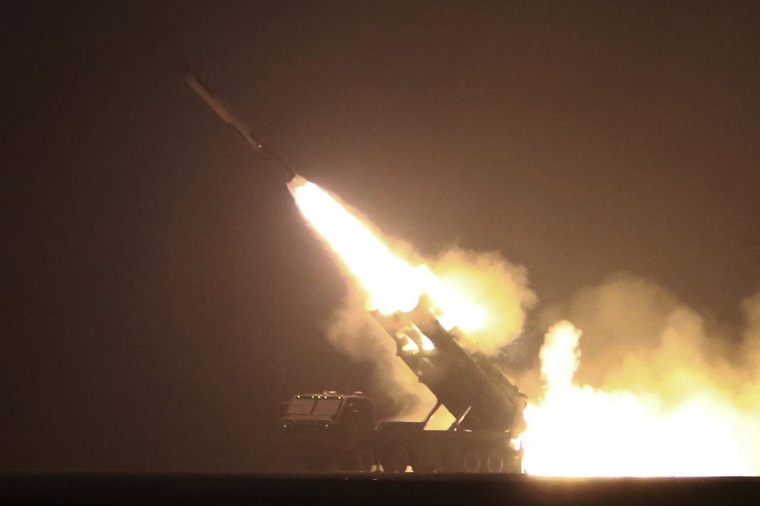
North Korea said Friday it test-fired long-range cruise missiles off its eastern coast a day earlier, adding to a provocative streak in weapons demonstrations as its rivals step up military training.
The launches, which were later confirmed by South Korea’s military, were intended to verify the reliability of the missiles and the rapid-response capabilities of the unit that operates those weapons, North Korean state media said.
The launches took place as the U.S. and South Korea held a simulation in Washington aimed at sharpening their response to North Korean nuclear threats.
Pyongyang’s official Korean Central News Agency said the four missiles flew for nearly three hours after being launched from the northeastern coast, drew oval and figure-eight patterns above the sea, and showed they can hit targets 1,240 miles away.
South Korea’s Joint Chiefs of Staff said the flight details announced by North Korea had discrepancies with the readings by U.S. and South Korean intelligence assets, but it didn’t elaborate. It said the allies were continuing to analyze the launches.
Lee Hyojung, spokesperson of Seoul’s Unification Ministry, which handles inter-Korean affairs, denounced North Korea for escalating its testing activity despite signs of deepening economic isolation and food insecurity.
North Korea first tested a long-range cruise missile system in September 2021 and has implied the missiles are being developed to be armed with nuclear warheads.
It also test-fired an intercontinental ballistic missile Saturday and a pair of short-range missiles Monday to demonstrate a dual ability to conduct nuclear strikes on South Korea and the U.S. mainland.
North Korea said Monday’s short-range launches were a response to the United States flying B-1B bombers to the region for joint training with South Korean and Japanese warplanes on Sunday in a show of force following the North’s ICBM test.
Prior to the ICBM launch, North Korea vowed an “unprecedentedly” strong response over a series of military drills planned by Seoul and Washington. North Korea has described the annual U.S.-South Korea drills as rehearsals for a potential invasion, although the allies say their exercises are defensive in nature.
Cruise missiles are among a growing number of North Korean weapons and are designed to be maneuverable in flight to evade defenses.
Since the collapse of negotiations with the United States in 2019, North Korea has been accelerating its development of short-range solid-fuel ballistic missiles targeting South Korea, including those that travel on low trajectories that theoretically would be harder to intercept.
North Korea is also trying to develop solid-fuel ICBMs, which could be easier to move on vehicles and can be fired faster than the North’s existing liquid-fuel ICBMs, reducing opportunities for opponents to detect the launches and counter them.
North Korea is coming off a record year in weapons demonstrations with more than 70 ballistic missiles fired, including ICBMs with potential to reach the U.S. mainland. It also conducted what it described as simulated nuclear attacks against South Korean and U.S. targets.
Leader Kim Jong Un doubled down on his nuclear push entering 2023, calling for an “exponential increase” in nuclear warheads, mass production of battlefield tactical nuclear weapons targeting “enemy” South Korea and the development of more advanced ICBMs.
The U.S. Department of Defense and South Korea’s Defense Ministry said their militaries conducted a simulation at the Pentagon on Wednesday that was focused on the possibility of North Korea using nuclear weapons. The allies discussed ways to demonstrate their “strong response capabilities and resolve to response appropriately” to any North Korean nuclear use.
The Americans during the meeting highlighted the Biden administration’s 2022 Nuclear Posture Review, which states that any nuclear attack by North Korea against the United States or its allies and partners “will result in the end of that regime,” the U.S. Department of Defense said. It was referring to a legislatively mandated document that spells out U.S. nuclear policy and strategy for the next five to 10 years.
The U.S. and South Korean delegations also visited Naval Submarine Base Kings Bay in Georgia, where they were briefed on the mission of Ohio-class nuclear-powered ballistic missile submarines. U.S. officials at the base described such forces as key means of providing U.S. extended deterrence to allies, referring to a commitment to defend them with the full range of its military capabilities, including nuclear ones.
Senior North Korean Foreign Ministry official Kwon Jong Gun denounced the allies’ simulated exercise and visit to the Georgia submarine base, calling the actions an extension of anti-Pyongyang hostility. Kwon in his statement also complained that the U.N. Security Council held an emergency meeting this week to discuss recent North Korean launches.
During the meeting on Monday, the United States and its allies urged the Security Council to condemn the North’s unlawful ballistic activities, while China and Russia blamed Washington for raising animosity by stepping up its military exercises targeting Pyongyang.
“The U.S. should bear in mind that if it persists in its hostile and provocative practices against the DPRK despite the latter’s repeated protest and warning, it can be regarded as a declaration of war against the DPRK,” Kwon said, using the initials of North Korea’s formal name, the Democratic People’s Republic of Korea.
In face of the North’s growing threats, South Korea has been seeking stronger reassurances from the United States that it would swiftly and decisively use its nuclear capabilities to defend its ally from a North Korean nuclear attack.
“The United States will continue to work with (South Korea) to ensure an effective mix of capabilities, concepts, deployments, exercises, and tailored options to deter and, if necessary, respond to coercion and aggression by (North Korea),” the Department of Defense said in a statement.
Meanwhile, Seoul’s Unification Ministry said it will resume radiation exposure tests for North Korean escapees who had lived near the North’s northern nuclear testing ground since its first detonation in 2006. Previous tests conducted on 40 escapees found nine people with abnormalities that could indicate high exposure, though no direct link to radiation was established.
The Seoul-based Transitional Justice Working Group had urged South Korea to resume such tests, saying radiation may have spread by rainfall and groundwater. The U.S. and South Korean officials have said the North Korea is likely preparing to conduct its seventh test at the site in Punggye-ri, which would be the first since 2017.
Lee, the ministry’s spokesperson, said the government plans to provide tests to any of the 881 people who had lived in that North Korean region after 2006 who wish to be tested.
- International edition
- Australia edition
- Europe edition
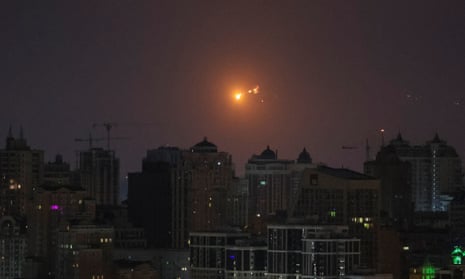
Poland to demand explanation from Moscow after missile breaches its airspace during Ukraine attack
Russian missile was targeting Ukraine’s Lviv region while Kyiv suffers third pre-dawn attack in four days
Poland said it would demand an explanation from Moscow after a Russian missile briefly breached Polish airspace during a massive missile attack on Ukraine , prompting the Nato member to put its forces on heightened readiness.
Russia and Ukraine have been engaged in a series of deadly aerial attacks, with Sunday’s early morning strikes coming a day after the Russian military said it had seized the Ukrainian village of Ivanivske, west of Bakhmut.
A militant attack on a Moscow concert hall on Friday that killed at least 133 people has also become a new flashpoint between the two countries, with President Vladimir Putin seeking to tie Kyiv to the attack; Ukraine has denied involvement and Islamic State has claimed responsibility.
The Ukrainian president, Volodymyr Zelenskiy, on Saturday accused Putin of seeking to “shift the blame” on to Kyiv for the concert hall attack.
“What happened yesterday in Moscow is obvious: Putin and the other thugs are just trying to blame it on someone else,” said Zelenskiy in response to Putin’s assertion that the suspects had been fleeing towards Ukraine.
“They have brought hundreds of thousands of their own terrorists here, on Ukrainian land, to fight against us, and they don’t care about what is happening inside their own country,” Zelenskiy added.
“That low-life Putin, instead of dealing with his Russian citizens, addressing them, was silent for a full 24 hours, thinking about how to tie this to Ukraine,” he said. “It’s all absolutely predictable.”

The Polish Armed Forces Operational Command (RSZ) said on Sunday that its forces were on a heightened state of readiness due to the “intensive long-range aviation activity of the Russian Federation tonight” and the missile attacks in Ukraine.
“Polish and allied aircraft have been activated, which may result in increased noise levels, especially in the south-eastern part of the country,” it said.
It later said Russia had violated Poland’s airspace with a cruise missile which “entered Polish space near the town of Oserdow (Lublin Voivodeship) and stayed there for 39 seconds”.
“During the entire flight, it was observed by military radar systems,” it added.
Poland’s defence minister, Władysław Kosiniak-Kamysz, said Poland had activated “all air defence systems, all air force systems”and that the Russian missile would have been shot down had there been any indication it was heading towards a target in Poland.
He said the missile had penetrated Polish airspace about 1,000-2,000 metres (0.6 to 1.2 miles).
Polish authorities were monitoring the attack on Ukraine and were in contact with Ukrainian counterparts, he added. Polish and Nato F-16s had been activated as part of the strategic response.
Poland’s foreign ministry said it would demand an explanation from Moscow over the missile. “Above all, we call on the Russian Federation to stop the terrorist air attacks on the inhabitants and territory of Ukraine, end the war, and address the country’s internal problems,” it said in a statement.
Speaking to the Polish broadcaster TVN24, Andrzej Szejna, a deputy foreign minister said the foreign ministry intended to summon the Russian ambassador to “provide information and explanations”.
A similar incident occurred in December, when a Russian missile breached Polish airspace for several minutes before returning to Ukraine.
In November 2022, two people were killed when a Ukrainian air-defence missile fell in the Polish village of Przewodow, near the Ukrainian border.
Officials in Ukraine said Russia had launched its third pre-dawn attack on Ukraine in the past four days, and the second to target the capital of Kyiv.
“Explosions in the capital,” Kyiv’s mayor, Vitali Klitschko, posted on Telegram on Sunday. “Air defence is working. Do not leave shelters.”
The Lviv region’s governor, Maksym Kozytskyi, said Stryi district, south of the city of Lviv, near the Polish border, had also been attacked.
Ukraine was earlier placed under a nationwide air alert that warned of cruise missiles being launched from Russian Tu-95MS strategic bombers. The alert was lifted about two hours later.
Serhiy Popko, the head of the Kyiv city military administration, said the missiles were fired at the capital “in groups”.
Preliminary reports suggested there were no casualties or damage, he said, and the city’s air defences had hit “about a dozen” missiles.
“The enemy continues massive missile terror against Ukraine,” Popko said on Telegram. “It does not give up its goal of destroying Kyiv at any cost.”
In Lviv, the mayor, Andriy Sadovy, said about 20 missiles and seven Iranian-made Shahed drones were fired at the region. “They targeted critical infrastructure facilities.”
The Ukrainian energy ministry said that Russia had also attempted on Sunday to hit a critical energy infrastructure facility in the Lviv region. “Equipment caught fire and the facility was de-energised. There were no casualties. The consequences are being assessed,” it said in a statement.
The Ukrainian state-run energy firm Naftogaz said Sunday that a Russian missile strike had hit an underground gas storage site, but that it would not affect the supply of natural gas to Ukrainian consumers.
Russia and Ukraine have increased their air attacks in recent weeks.
The Ukrainian military claimed on Sunday it had hit two large Russian landing ships as well as other infrastructure used by the Russian navy in the Black Sea during overnight strikes on the annexed Crimean peninsula.
“The defence forces of Ukraine successfully hit the Azov and Yamal large landing ships, a communications centre and also several infrastructure facilities of the Russian Black Sea Fleet in temporarily occupied Crimea,” Ukraine’s military said in a statement.
Moscow-installed officials on the peninsula said their forces had repelled a major Ukrainian aerial attack late on Saturday night. “It was the most massive attack in recent times,” the governor of Sevastopol, Mikhail Razvozhayev, said in a Telegram post.
He said a 65-year-old man was killed and four people had been injured. He did not mention any damage to Russian warships, but said transport infrastructure including passenger boats was partly damaged.
“Of the six boats, five had their windows broken … During the day, the windows of the damaged boats will be replaced and as they are restored they will be brought back online,” he said.
Razvozhayev also said that three passenger buses, 13 school buses and one trolley bus were among vehicles damaged during the overnight attacks.
Kyiv, which has struggled to find weapons and soldiers after more than two years of war, has promised to retaliate by taking the fighting to Russian soil.
Multiple air attacks on Saturday on the Russian border region of Belgorod adjoining Ukraine killed two people and injured at least seven, the regional governor said.
Farther east, a drone attack on the Samara region caused a fire at a major oil refinery, the latest in a series of strikes against Russia’s energy industry.
Belgorod’s governor, Vyacheslav Gladkov, wrote on Telegram that two districts in his region, as well as the regional capital, Belgorod city, had been hit in drone and air attacks.
A man was killed when three balconies on an apartment building collapsed, Gladkov said.
Moscow has escalated its own strikes, firing dozens of missiles on Friday and launching dozens of explosive drones to destroy Ukraine’s energy infrastructure.
Russian forces have also taken control of a string of frontline settlements in recent weeks.
The capture last month of Adviivka , near the Russian-held stronghold of Donetsk, was the first major territorial gain made by Russia since the devastated city of Bakhmut was seized 10 months ago.
Putin hailed that success as a sign that Russian forces were back on the offensive.
Agence France-Presse, Associated Press and Reuters contributed to this report

Ukrainian MPs pass controversial mobilisation bill to boost troop numbers

Mass use of guided bombs driving Russian advances, says Ukraine

The pro-Putin far right is on the march across Europe – and it could spell tragedy for Ukraine

Ukraine war briefing: Russian strikes kill seven people in Kharkiv and Odesa regions

Russia and Ukraine trade blame over Zaporizhzhia nuclear plant drone strike

Russia accused of using chemical gas attacks against Ukrainian soldiers

Fugitive former US city councillor enlists with Russia for war in Ukraine

Why comparisons between Gaza and Ukraine are not valid

Send missiles to Ukraine or stand accused of appeasing Russia? Olaf Scholz must choose
Most viewed.
Some of Russia's 'prestigious' guided missiles may be malfunctioning and falling short of their targets: UK intelligence
- Some Russian missiles may be malfunctioning and missing their targets, per British intelligence.
- The AS23a Kodiak — or Kh-101 — is one of Russia's top precision-guided munitions.
- "Issues in its production" could lead to rushed production jobs, the UK MOD says.

Premium Russian cruise missiles might be malfunctioning and missing their targets, according to new intelligence from the UK Ministry of Defence.
The UK MOD said on Tuesday that it analyzed open-source images taken on March 31, 2024, which showed missile wreckage in a field in Saratov Oblast, southern Russia.
The UK MOD said the debris was initially considered remnants of a "possible Ukrainian uncrewed aerial vehicle." However, their analysis concluded that the pieces were likely "fragments of a Russian AS-23a KODIAK air-launched cruise missile."
Related stories
"It is highly likely the debris was the result of a malfunction of a KODIAK missile that was launched towards Ukraine earlier that morning," the UK MOD said.
"The highly likely malfunction of such a prestigious missile indicates issues in its production, likely impacted by sanctions and being rushed to meet the demands of the conflict," the department added.
The AS23a Kodiak is one of Russia's top precision-guided munitions and was designed to attack major military targets like airfields and warships. Also known as the Kh-101, it carries a 992-pound payload that can be equipped with high explosive or fragmentation warheads, per the Center for Strategic and International Studies.
Russia has been using these missiles not just to hit military targets but also to take out Ukraine's grain silos and "hurt global food markets," UK intelligence said in October.
Russia's blockade of Black Sea ports has also destabilized Ukraine's food production and sent food prices soaring worldwide, even in places like Kenya and Egypt , which relied heavily on Ukrainian and Russian wheat imports.
While Russia is still losing hundreds of troops a month, Ukraine is struggling to prevent further Russian frontline advances. It has suffered blows from the huge barrage of missiles Russia unleashed on it this winter.
In March, Russia also pounded Ukraine with glide bombs, a tactic that Ukraine can only counter by taking out the planes that drop them. Ukrainian Minister of Foreign Affairs Dmytro Kuleba said at a March 27 briefing that Russia dropped around 700 glide bombs on Ukraine within six days, bombarding targets consistently from March 18 to 24.
With US aid still stalled out in Congress, Ukrainian President Volodymyr Zelenskyy is now begging for more Patriot air-defense systems to defend cities like Kharkiv from Russian missile and bomb attacks. Ukraine is also looking to build drones that could hunt down Russian unmanned aerial vehicles instead of burning through their stockpiles of surface-to-air missiles to prevent aerial harassment.
Representatives for the Russian and Ukrainian defense departments did not immediately respond to requests for comment from Business Insider.
Watch: Russia fires 120 missiles across Ukrainian cities
- Main content

Russia strikes Trypillia TPP with latest X-69 missiles - Defense Express
O n the morning of April 11, the Russian Federation struck the Trypillia Thermal Power Plant (TPP) with the latest X-69 cruise missile. This is evidenced by the found debris, according to Defense Express.
According to the received information, the range of the launch of the Russian missiles is about 400 kilometers. This parameter exceeds the known range estimates of the X-69 at 300 kilometers, as the next iteration of the X-59MK2.
The use of the X-69 missiles by Russia
This is not the first time when the Russian army has used these missiles to attack Ukraine. In February of this year, it was already mentioned that Russia had started using them to strike Ukraine, and isolated cases of use were reported in 2023. Later, this unofficial information was confirmed thanks to the publication of the Kyiv Scientific Research Institute of Forensic Expertise (KNRIFE) on the study of X-69 debris.
The X-69 is a Russian subsonic cruise missile for tactical aviation aircraft. It is launched from Su-34 and Su-35 aircraft. Moreover, it is intended to become the main cruise missile for the Su-57.
What is known about the missile
Available data on the missile up to now indicated a range of up to 290 kilometers, but in practice, it turned out to be greater. The weight of the warhead was declared to be within 310 kilograms. The missile guidance system, according to declarations, is similar to that of the X-101: satellite navigation with jam-resistant antennas Kometa-M antennas, as well as inertial. Its main feature is the ability to fly at very low altitudes at a height of 20 meters, which is lower than the capabilities of the X-101.
It is interesting that although the missile is subsonic and has a smaller warhead than the hypersonic X-47M2 Kinzhal, the use of it for a strike against the Trypillia TPP can be considered a worse scenario.
The dangers of the X-69
The results of its strikes indicate its capability to penetrate the obviously depleted Ukrainian air defenses. Secondly, launching the missile from an aircraft negates the characteristic feature of large-scale missile attacks, where the takeoff of strategic bombers Tu-95MS and MiG-31K is detected.
Launching it from a Su-34 or Su-35 aircraft may suggest a more massive character due to the greater number of carriers. However, this is possible if Russia establishes its serial production.
The missile's range of 400 kilometers is sufficient to strike a significant number of targets on the territory of Ukraine from tactical aviation aircraft, that may well approach the border or the front line at a distance of 50-70 km.
Russian attack on Ukraine on the night of April 11
That night, Russians once again launched a combined attack on Ukraine. The main target was the Lviv region.
In total, Russia used 82 means of air attack, including dozens of missiles and 40 attack UAVs.
A total of 57 air targets were destroyed by Ukrainian Air Defense Forces:
・16 Kh-101/Kh-555 cruise missiles;
・39 Shahed-131/136 attack UAVs;
・2 Kh-59 guided missiles.
Among other things, during the massive attack, Russians completely destroyed the Trypillia thermal power plant located in Kyiv region.
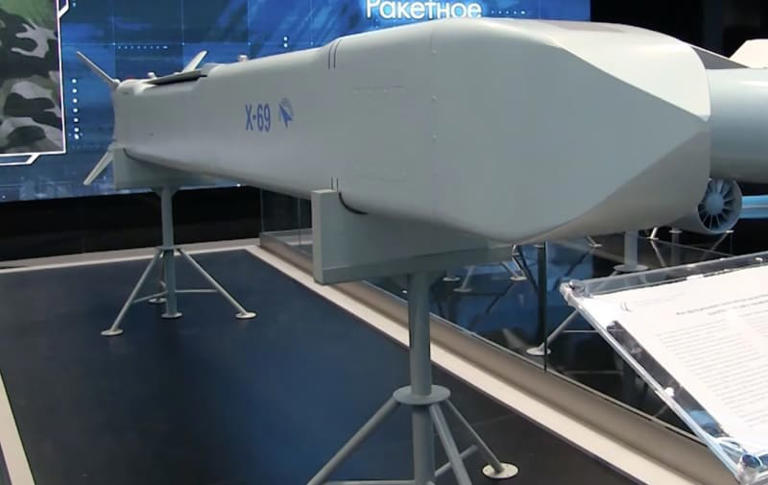
Russia-Ukraine war latest: Putin 'may launch all-out bid to seize second city' - as Western officials fear major Russian advance
Russia has launched fresh strikes on critical infrastructure - with Kyiv residents told to cut energy consumption every night for the rest of 2024. Meanwhile, Western officials reportedly fear a major Russian advance - amid concerns Vladimir Putin could launch an attempt to seize Kharkiv.
Friday 12 April 2024 17:24, UK
- Ukrainian defences 'at risk of collapse' as officials fear major Russian advance - and all-out assault to seize second city
- Russia hits critical infrastructure in overnight missile strikes
- Putin mocks peace conference
- The big picture : Everything you need to know about the war this week
- Your questions answered: Is it too late to save Ukraine?
- Live reporting by Sharon Marris and (earlier) Emily Mee
Ex-armed forces minister James Heappey has told Sky's defence and security editor Deborah Haynes the UK should consider sending its forces to Ukraine to train troops.
On the Sky News Daily, host Tom Cheshire talks to her and Sky's military analyst Professor Michael Clarke about the interview with Mr Heappey, who stepped down from his role last month.
They assess the bleak situation in Ukraine and why the conflict is at a critical stage. They also discuss how prepared the UK would be if it faced a war in the near future.
A former Ukrainian secret service employee has been injured in Moscow after a device under his car exploded.
Vasily Prozorov suffered leg injuries that are not considered life threatening after the device detonated as he tried to start his car, Radio Free Europe cited Russian media as saying.
According to RFE, Mr Prozorov worked for Ukraine's SBU until 2018.
The following year, he told media in Moscow that he had collaborated with Russia "for ideological reasons" from April 2014 until he left the SBU.
These photos show the damage to a thermal power plant in Kharkiv, eastern Ukraine.
A massive missile and drone attack destroyed and damaged a number of power plants across Ukraine overnight, part of a renewed Russian campaign targeting energy infrastructure.
The Trypilska plant, which was the biggest energy supplier for the Kyiv, Cherkasy and Zhytomyr regions, was struck numerous times, destroying the transformer, turbines and generators.
Vladimir Putin said the attacks were a response to Ukrainian strikes that targeted Russian oil refineries.
In Kharkiv, there were at least 10 other strikes on energy infrastructure, resulting in damage like that seen in these photos.
Ukraine's foreign minister Dmytro Kuleba said more than 200,000 people in the region were without power.
Herman Halushchenko, its energy minister, said it was a "large scale, enormous, missile attack that affected our energy sector very badly".
More details have emerged about American Russell Bentley, who is missing in the Russian-controlled Donetsk region in eastern Ukraine.
Online news outlet Mash said he disappeared on 8 April after a district in the city of Donetsk was shelled by Ukrainian forces.
Mash cited his wife as saying he had gone to see if anyone needed help but had not returned.
Mr Bentley joined pro-Russian fighters in eastern Ukraine in 2014.
According to Russian news outlet RIA, he later swapped his gun for journalism and worked with state-run news outlet Sputnik.
In a 2022 Rolling Stone interview, he came across as a conspiracy theorist (he said the collapse of the World Trade Towers was a "pre-planned controlled demolition") and a fan of dictators (he described war crimes-accused former Libyan leader Muammar Gadhafi as "one of the greatest").
He became a citizen of the Donetsk People's Republic in 2017 and a citizen of Russia in 2020, said the interview, which was headlined The Bizarre Story Of How A Hardcore Texas Leftist Became A Frontline Putin Propagandist.
In words similar to those of Russia's president Vladimir Putin, Mr Bentley described the Ukrainian military as "genuine mass-murdering Nazis", also claiming their ranks were swelled by "thousands of ISIS cannibals" - claims that have been widely dismissed by commentators.
The Netherlands will provide Ukraine with an additional €1bn (£850m) in military support this year, and has earmarked three-times that amount for next year.
Dutch Prime Minister Mark Rutte delivered the news in a social media post.
The extra support in 2024 takes the total sum for this year to €3bn (£2.56bn), along with €400m (£340m) to support Ukraine's economy, Mr Rutte said.
"Ukraine must win this battle - for their and our safety," he said.
Dozens of Russian military instructors have arrived in the African country of Niger.
The move is part of a new agreement with Niger's leaders, who recently cut ties with the West.
The Tele Sahel broadcaster showed footage of a Russian transport plane arriving at Niamey airport on Wednesday night.
It said Russia would help to "install an air defence system... to ensure complete control of our airspace", according to comments reported by news agency AFP.
The Russian military instructors are from African Corps, the Russian defence ministry's paramilitary group. They are also seen as the successor to the Wagner mercenary group in the continent.
Niger's elected president Mohamed Bazoum was overthrown last year by the junta and they cut military and diplomatic ties with former colonial power France, as well as ending an agreement with the US.
Niger has been struggling with increased violence from Islamic State and it is also concerned about Boko Haram militants along its border with Nigeria.
According to the Council of Foreign Relations, Russia's growing influence in Africa has come as some African countries are frustrated with the failures of Western intervention and resentful over their own lack of representation in international institutions.
The CFR says Russia is trying to "gain more support for its vision of a multi-polar world order based on weakened Western influence". We have seen Moscow lobby African countries for support in the United Nations on votes regarding the Ukraine conflict, for example.
Russia is also interested in Africa's vast natural resources (including gold, diamonds, uranium and oil), but it is far from an economic powerhouse in the continent - less than 1% of its foreign direct investment goes there.
Russia has summoned the French ambassador after French Minister of Europe and Foreign Affairs Stephane Sejourne said Paris was not interested in talking with Moscow because statements from Russian officials contained false information.
"We regard these statements by the French foreign minister as a conscious and deliberate action by the French side aimed at undermining the very possibility of any dialogue between the two countries," the Russian foreign ministry said on Friday.
Mr Sejourne's comments had come after a rare phone call between the French defence minister Sebastien Lecornu and his Russian counterpart Sergei Shoigu about last month's deadly attack on a Moscow concert hall.
The French defence ministry had reported Mr Lecornu as saying France was ready to do more to battle "terrorism" but Russia had responded by warning France it hoped the French secret services had not been involved in the attack, according to a readout from the Russian defence ministry.
Commenting on this, Mr Sejourne told French broadcasters: "It is not in our interest currently to hold discussions with Russian officials because the statements and the summaries issued about them are lies."
Before France could talk to Russia again, he added, "perhaps we must first establish trust, perhaps above all have the military situation develop on the ground in Ukraine to enable a renewal of relations. This is not currently the case."
Russia has accused a number of countries of being involved in the attack, which killed more than 100 people. These include the UK and Ukraine. Islamic State's Afghan offshoot has claimed responsibility.
Belgian prosecutors are investigating possible Russian interference in the upcoming European Parliament election following findings provided by intelligence services.
Prime Minister Alexander De Croo said investigators found Russian groups were meddling in the European election to push forward pro-Russia candidates - who Moscow hopes will weaken support for Ukraine.
"The objective is to help elect more pro-Russian candidates to the European Parliament and reinforce a certain pro-Russian narrative in that institution," Mr De Croo told reporters.
The investigation was launched after Czech authorities found pro-Russian agents active in Brussels seeking to influence, and even pay, European politicians to promote a pro-Russian agenda.
They did not find evidence cash payments were made in Belgium, although interference had occurred there.
The West has often accused Russia of using disinformation to undermine its rivals, promote Moscow or attempt to sway public opinion during election campaigns.
The Kremlin has repeatedly denied this.
Western officials have been raising concerns in recent media reports that Ukraine's defences may be at risk of collapse in the face of a new Russian assault.
Ukraine is facing shortages of both manpower and ammunition, and increasingly appears outmanned and outgunned on the battlefield.
The country is now at its "most fragile moment" since the war began, Western officials with knowledge of the situation told Bloomberg.
They warned Russia could be given an opening to make a major advance for the first time since near the beginning of the war.
It follows reports Ukraine's second-largest city could be among the possible targets for a renewed Russian assault - with many analysts suggesting Vladimir Putin is likely to launch an all-out offensive at some point over the coming months.
The city of Kharkiv has faced intense bombardment from Russia in recent months, coming under fire from S-300 ballistic missiles and glide bombs.
Last week, Russian forces deployed a "double-tap" attack - the tactic of hitting a target a second time to target emergency services who have arrived at the scene of an initial strike.
Kharkiv is not the most likely target, media reports say, but Russian news outlets have raised the prospect.
If it were to be targeted, it would likely be due to its proximity to the Russian border - and the attacks in the nearby Russian region of Belgorod.
Vladimir Putin previously spoke about creating a "buffer zone" on Ukraine's border to stem the attacks on Russia.
Volodymyr Zelenskyy, who inspected Ukrainian defensive fortifications in the Kharkiv region on Tuesday, has said Russia may be preparing a big offensive in late May or in June.
However, it's thought that seizing Kharkiv would be difficult for Moscow - not least because it failed spectacularly at doing so in 2022.
Andriy Zagorodnyuk, a Ukrainian expert and former defence minister, told The Economist there was a "strong chance" Russia would not succeed at the things it needs to do to take Kharkiv: encircling the city, establishing air superiority and winning an urban campaign.
Still, there are fears Russia could attempt to destroy the city in an assault reminiscent of that in Aleppo.
Rob Lee, a senior fellow at the Foreign Policy Research Institute, a think tank in Philadelphia, said: "There are two issues now: the ammunition issue and the manpower issue. If they address them, I think Ukraine can hold back Russian advances.
"But if they don't get addressed, there is a potential that Russia will make greater gains this summer."
Vladimir Putin has mocked peace talks set to take place in Switzerland and claimed Russia was not invited.
The high-level international conference is happening in June and is aimed at charting a path toward peace in Ukraine.
Switzerland has recognised a peace process can't happen without Russia and expressed hope Moscow may join the peace process someday.
But Mr Putin said: "They aren't inviting us there.
"Moreover, they think there is nothing for us to do there, but at the same time they say that's it's impossible to decide anything without us. It would have been funny if it weren't so sad."
Russia has dismissed Volodymyr Zelenskyy's peace formula, which would require Moscow to pull back its troops, pay compensation to Ukraine and face an international tribunal for its action.
Be the first to get Breaking News
Install the Sky News app for free

US to sell missile defense upgrades to Ukraine
The United States will sell Ukraine $138 million of equipment to maintain and upgrade its HAWK air defense systems to help defend against Russian drone and cruise missile attacks, a U.S. State Department official told Reuters on Tuesday.
In 2022, the U.S. began shipping HAWK interceptor missiles to Ukraine as an upgrade to the shoulder-launched Stinger air defense missile systems - a smaller, shorter-range air defense system.
Tuesday's emergency Foreign Military Sale (FMS) uses $138 million of the $300 million in Foreign Military Financing (FMF) that Congress passed as part of the annual defense spending bill recently signed into law.
Presidential Drawdown Authority (PDA) had been used previously to transfer HAWK equipment to Ukraine. Presidential Drawdown Authority allows the United States to transfer defense articles and services from stocks quickly without congressional approval in response to an emergency.

IMAGES
VIDEO
COMMENTS
WASHINGTON — The Air Force is looking to move ahead with flight testing for its new hypersonic cruise missile in fiscal year 2025, according to a top service official and budget documents. "We ...
The U.S. Air Force has awarded Raytheon a contract to develop the service's next-generation stealth cruise missile. The Long Range Stand Off (LRSO) missile will arm B-21 Raider and B-52 ...
The U.S. Air Force secretly test-fired a long-range variant of a stealthy cruise missile from a B-2 stealth bomber late last year, defense contractor Northrop Grumman revealed Thursday. The ...
The AGM-158C LRASM (Long Range Anti-Ship Missile) is a stealth air launch anti-ship cruise missile developed for the United States Air Force and United States Navy by the Defense Advanced Research Projects Agency (). Derived from the AGM-158B JASSM-ER, the LRASM was intended to pioneer more sophisticated autonomous targeting capabilities than the U.S. Navy's current Harpoon anti-ship missile ...
An unarmed AGM-86B air-launched cruise missile is released from a B-52H Stratofortress over the Utah Test and Training Range during a nuclear weapons system evaluation sortie on Sept. 22, 2014.
A U.S. Air Force MC-130J Commando II executes the first-ever European-theater live-fire demonstration of a Joint Air-to-Surface Standoff Missile during exercise Atreus in Norway on Nov. 9, 2022.
The need for a new sea-launched cruise missile has been under consideration for some time, with the possibility mentioned in the 2018 Nuclear Posture Review.An un-named Navy functionary told ...
Ground-launched cruise missiles (GLCM) also are making a comeback since the demise of the Intermediate-Range Nuclear Forces Treaty in August 2019. That 31-year-old pact compelled the Air Force to ...
The Pentagon has plenty of cruise missiles in its arsenal, from the long-serving Tomahawk to the new JASSM-ER.But a new missile set to enter service in 2027 is radically different: the new ...
The Dec. 16 test used a cruise missile armed with a warhead this time. (U.S. Air Force) WASHINGTON — The U.S. Air Force on Thursday destroyed a target in the Gulf of Mexico with a cruise missile ...
AGM-158 JASSM. The AGM-158 JASSM ( Joint Air-to-Surface Standoff Missile) is a low detection standoff air-launched cruise missile developed by Lockheed Martin for the United States Armed Forces. [4] It is a large, stealthy long-range weapon with a 1,000-pound (450 kg) armor piercing warhead. It completed testing and entered service with the U.S ...
The US Air Force has tested a hypersonic cruise missile in the Pacific for the first time, in what analysts say is a signal to China that Washington still competes in a weapons arena where many ...
From the report. In its FY2023 budget request, the Navy eliminated funding for research and development into a new nuclear-armed sea-launched cruise missile (SLCM-N). The Navy indicated that the ...
The U.S. Navy is set to upgrade its stock of Tomahawk cruise missiles to a new Block V standard. The new missiles can attack enemy ships at sea or land targets with a new multi-effect warhead. The ...
Air-breathing cruise missiles' smaller size means a single aircraft, such as a Boeing B-52, can carry them in much greater numbers. "For a hypersonic boost-glide vehicle you can get two, maybe ...
The USAF is buying the new missiles as quickly as Lockheed can make them. CSIS projected the service would have more than 3,600 JASSM-ERs in 2026, the year in which its Taiwan war games were set.
The AGM-129A advanced cruise missile is a stealth, nuclear-capable cruise missile used exclusively by B-52H bombers., ... give the United States a lethal deterrent capability well into the 21st century. Background In 1982 the Air Force began studies for a new cruise missile with stealth characteristics after it became clear that the AGM-86B ...
The Tomahawk Land Attack Missile (TLAM) is an all-weather, long range, subsonic cruise missile used for deep land attack warfare, launched from U. S. Navy surface ships and U.S. Navy and United
The United States will sell Ukraine up to $138 million worth of equipment to maintain and upgrade its HAWK air defense systems to help defend against Russian drone and cruise missile attacks, a U ...
The main outcome of the United States Navy submarine missile project was the SSM-N-8 Regulus missile, based upon the V-1. The United States Air ... Otomat Mk2 E / Teseo Mk2/E 360 km new turbofan. C-801 (40 km) China; C-802 (120 ... (the United States fired cruise missiles in 1991). The Royal Air Force uses the Storm Shadow cruise missile on its ...
Updated 8:39 PM PDT, January 24, 2024. SEOUL, South Korea (AP) — North Korea said Thursday it conducted its first flight test of a new cruise missile, as it expands its military capabilities in the face of deepening tensions with the United States and neighbors. The report in state media came a day after South Korea's military said it ...
Budgets for cruise missile defense of the homeland in fiscal 2022 and 2023 were modest, with combatant commands including NORTHCOM placing additional funding for development in so-called wish ...
North Korea's Kim watches cruise missile launches as US, South Korean troops begin annual drills. ... A TV screen shows an image of North Korea's missile launch during a news program at the Seoul Railway Station in Seoul, South Korea, Monday, Aug. 21, 2023. North Korean leader Kim Jong Un has observed the test-firing of strategic cruise ...
Feb. 24, 2023, 3:59 AM PST / Source: The Associated Press. By Associated Press. North Korea said Friday it test-fired long-range cruise missiles off its eastern coast a day earlier, adding to a ...
Russian missile was targeting Ukraine's Lviv region while Kyiv suffers third pre-dawn attack in four days Poland said it would demand an explanation from Moscow after a Russian missile briefly ...
A Tomahawk cruise missile is seen being fired from a US guided-missile destroyer. Typhon launchers are designed to fire either Tomahawk missiles or the US Navy's Standard Missile 6.
Advertisement. Premium Russian cruise missiles might be malfunctioning and missing their targets, according to new intelligence from the UK Ministry of Defence. The UK MOD said on Tuesday that it ...
The X-69 is a Russian subsonic cruise missile for tactical aviation aircraft. It is launched from Su-34 and Su-35 aircraft. Moreover, it is intended to become the main cruise missile for the Su-57.
The US army veteran had used crowdfunding platforms to finance his involvement in the Ukraine conflict, and decided to fight for the Russian-backed Donetsk People's Republic. 09:51:30
Apr 9, 202413:00 PDT. RTX. The United States will sell Ukraine $138 million of equipment to maintain and upgrade its HAWK air defense systems to help defend against Russian drone and cruise missile attacks, a U.S. State Department official told Reuters on Tuesday. In 2022, the U.S. began shipping HAWK interceptor missiles to Ukraine as an ...